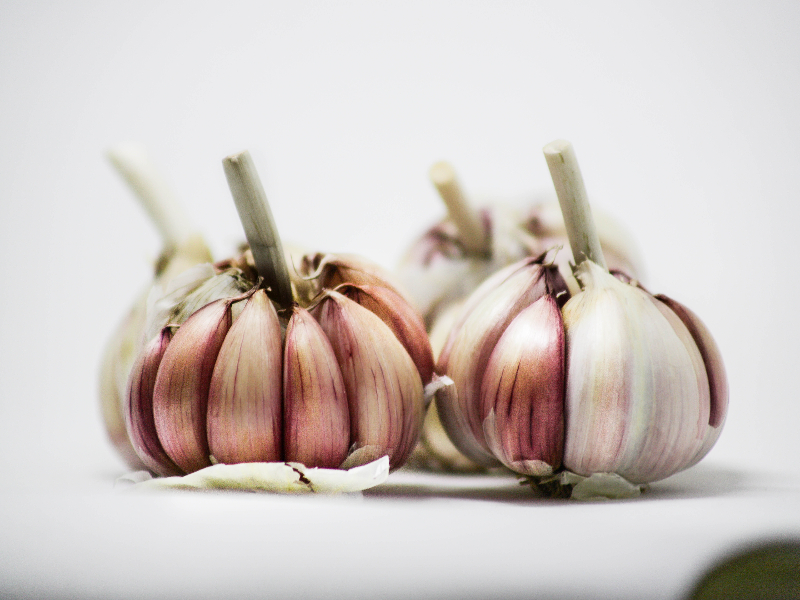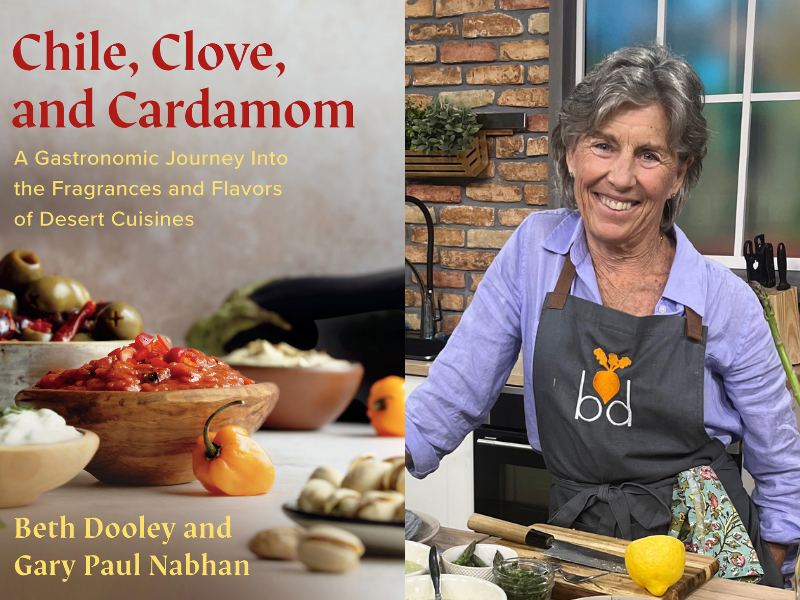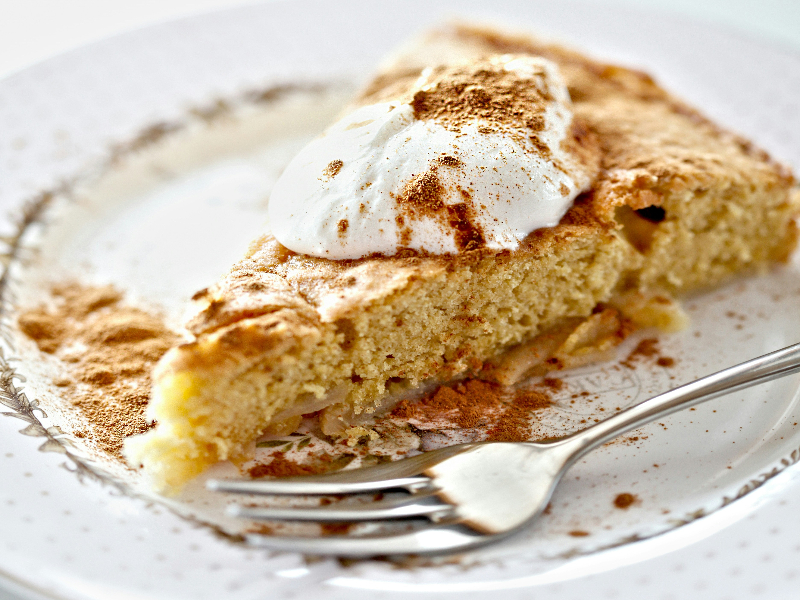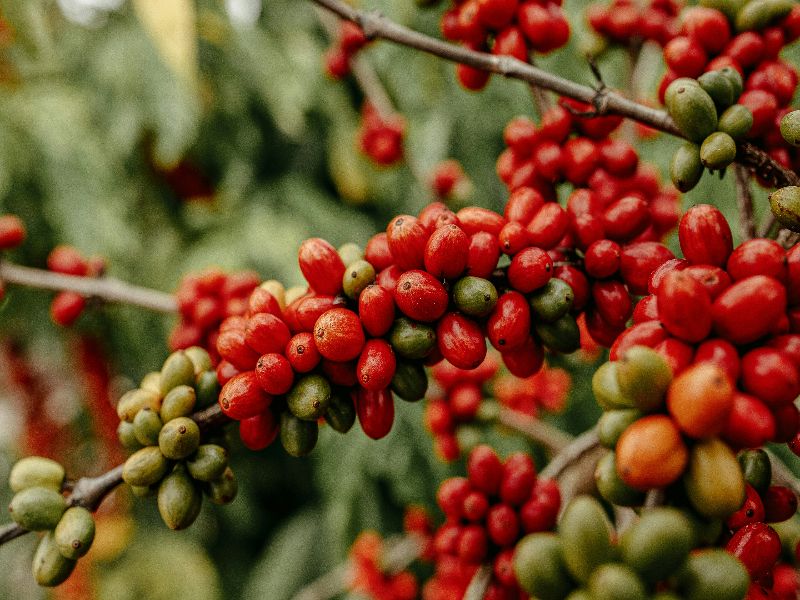
Garlic
I’ve never spent much time wondering about how many kinds of garlic exist. I’ve always been OK having at least one white bulb at the ready and I say that as a curious and inquisitive person.
If you’re like me, we’re missing out! Do you know there are hundreds of varieties of this humble bulb?
Genus Allium and species sativum, garlic is one of world’s oldest cultivated plants. Its origins are believed to be Central Asia, growing wild and later domesticated. Trade, migration, and conquest brought it near and far.
For ancient Egyptian, Greek, Roman, Chinese, and Indian civilizations, its use was medicinal – treating wounds, preventing infections, enhancing athletic performance, in potions, and remedies for various ailments – culinary, and religious – in rituals, ceremonies, and offerings to gods and ancestors; it was a symbol of strength, courage, and protection. Its use also included currency and a unit of measurement.
Britain, France, Spain, and other European regions can thank the Romans. Arabs brought it to Africa and influenced the cuisine of North Africa and Ethiopia. Garlic came to the Americas with Spanish and Portuguese explorers and colonizers.
Within the species, there are two subspecies: sativum (softneck) and phioscorodon (hardneck), named after the stalk growing from the bulb.
Softneck, the most common type we buy in the grocery store, has a mild flavor and a long shelf life. It’s easy to peel and chop and is used in almost any recipe calling for garlic.
Hardneck is rarer, more expensive, with a stronger flavor and aroma. It has fewer cloves, but they’re larger and easier to peel. It doesn’t store as well since the species is more sensitive to temperature and humidity. Able to withstand high heat, it’s good for roasting, grilling, or sautéing.
Within the species, there are about 10 major varieties of garlic, each with its own sub-varieties or cultivars; the varieties are based on the shape, color, flavor, and origin of the bulbs. Here are some of the most common ones:
Softneck: Artichoke (Inchelium Red, California Early, Italian Purple); Middle Eastern (Persian Star, Turkish Red, Uzbek Turban); Silverskin (Nootka Rose, Silver White, Polish White).
Hardneck: Creole (Burgundy, Ajo Rojo, Creole Red); Glazed Purple Stripe (Red Rezan, Purple Glazer, Vekak); Marbled Purple Stripe (Metechi, Siberian, Bogatyr); Purple Stripe (Chesnok Red, Persian Blue, Shatili).
We love garlic so much so that more than 25 tons are produced each year. Besides its flavor, garlic is rich in antioxidants, vitamins, minerals, and phytochemicals with anti-inflammatory, antibacterial, antiviral, antifungal, and immune-boosting properties.
Lucky for us, on July 29, from 8:00 a.m. – 11:00 a.m., Mission Garden’s, 946 W. Mission Lane, Garlic Festival celebrates all things Sonoran Desert-grown garlic, including some of the varieties listed above. The Garden Shop will sell 50 loaves of garlic bread made by Barrio Bread’s and James Beard Award winner Don Guerra. The bread is a proprietary garlic loaf not regularly offered at Barrio Bread and made with garlic grown at Mission Garden.
Classes
Do you know a teen who loves cooking and wants five days of action-packed hands-on experiences learning new skills from a professional chef? Maybe they dream of becoming a chef? If so, our Teen Chef Camp is the perfect idea! From July 24-28, teens will learn everything they need to know to slice, dice, chop, and brunoise their way to stocks, sauces, soups, appetizers, salads, side dishes, dry and moist heat cooking, breads, and desserts; preparing delicious dishes using fresh and seasonal ingredients, and how to present them with flair and creativity.
On July 26, Chef/Butcher Brett Sippy kicks off his monthly class: Behind the Butcher Counter, where you’ll cook and learn about all the different cuts and best uses of meat, poultry and fish. The July menu: U.S. Prime top sirloin kebabs; a crunchy and tangy Southwest Slaw with a poppyseed dressing; and juicy Balsamic Marinated Peaches served with a scoop of vanilla ice cream.
On August 8, no passport needed to join Zio Peppe Chef/Owner Devon Sanner and wine authority Bob Leopardi for Taste of Italy: Wines & Small Bites at Zio Peppe. You’ll enjoy three whites: San Lorenzo Gavi from Piemonte, Viticoltori de Conciliis Falanghina from Campania and Venica & Venica Pinot Grigio from Friuli-Venezia Guiliaand and three reds: Lenotti Valpolicella from Veneto, Domenico Clerico Dolcetto from Langhe, Piemonte and Bastioni dei Collazzi Chianti Classico DOCG, Impruneta, Florence, with a curated menu to complement each wine.
What’s the Buzz? Like wine, cheese and chocolate, honey has joined the ranks as an artisanal obsession. Experience Sonoran Desert honey like never before and taste it like a sommelier tastes wine on October 18 with beekeeper and sommelier Noel Patterson of Dos Manos Apiaries.
Wishing you joy in the kitchen,
Michele
Garlic Soup
20 garlic cloves, peeled and smashed
4 cups chicken or vegetable broth
2 tablespoons unsalted butter
2 tablespoons all-purpose flour
¼ teaspoon kosher salt
¼ teaspoon freshly ground black pepper
¼ teaspoon dried thyme
¼ teaspoon dried rosemary
Pinch of nutmeg
Chives, thinly sliced for garnish, optional
1. In a large pot over medium heat, melt butter, then reduce heat to medium-low, add garlic and cook about 15 minutes, stirring occasionally, until golden and soft.
2. Sprinkle flour over garlic and cook another minute, stirring constantly, making a roux.
3. Gradually whisk in the broth, stirring well to prevent any lumps.
4. Bring soup to a boil, then reduce the heat and simmer about 20 minutes, until the garlic is very tender. Blend soup to make it smooth and creamy or leave it chunky and rustic.
Note: Other ingredients like onion, potato, carrot, celery, or Parmesan cheese can also be added.
Photo credit: Fernando Prado, Unsplash





